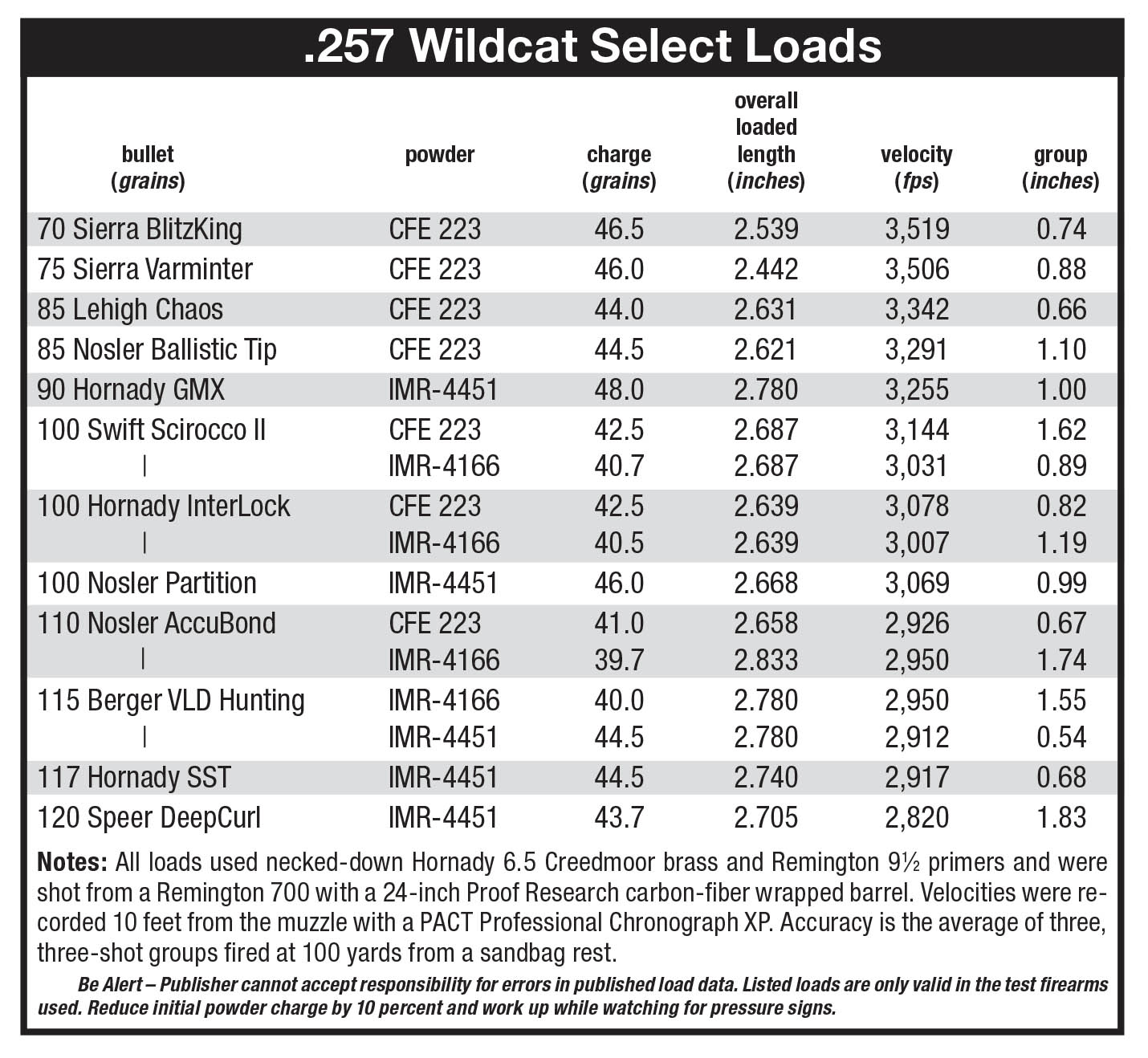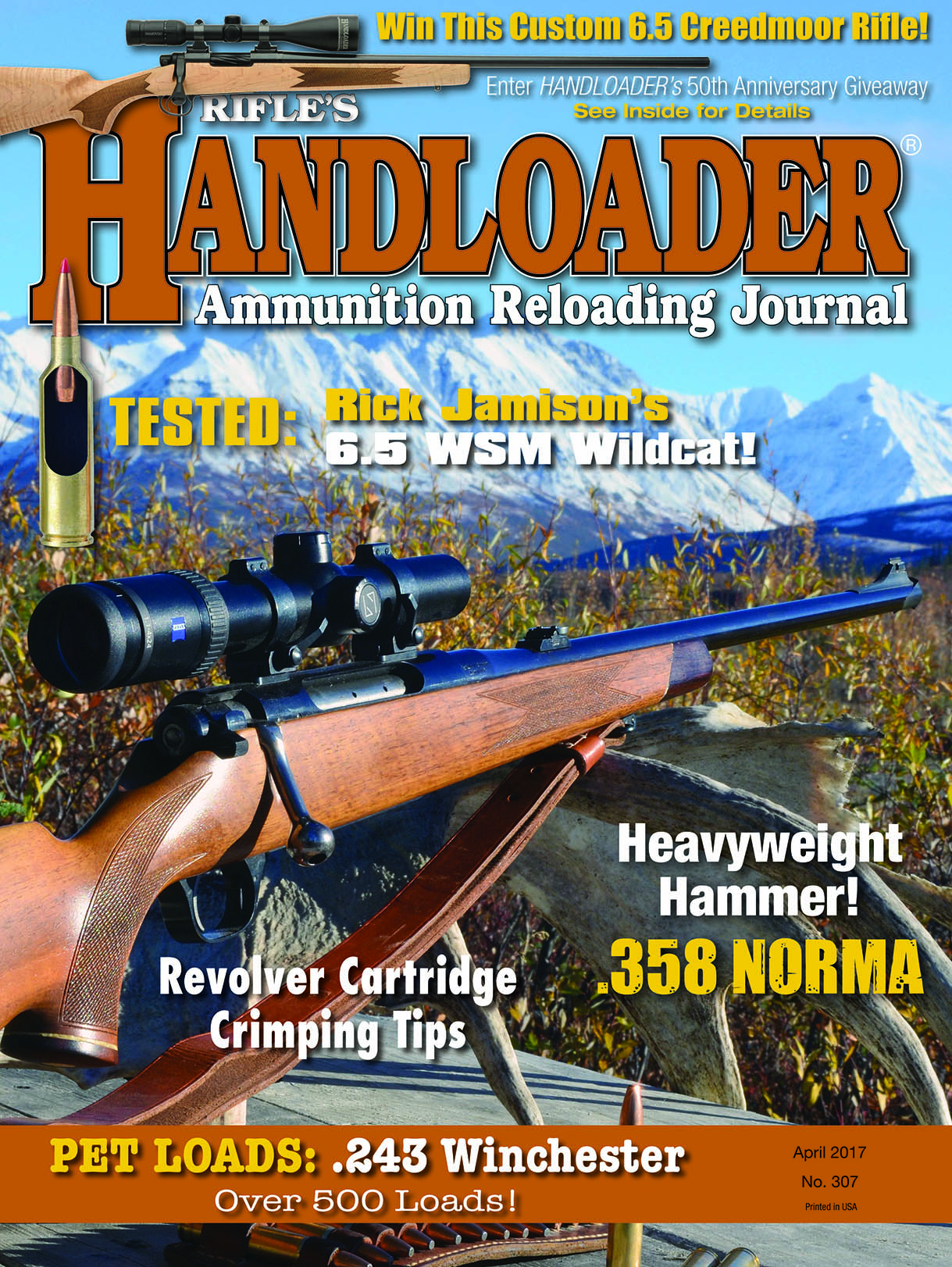Wildcat Cartridges
.257 Wildcat
column By: Richard Mann | April, 17
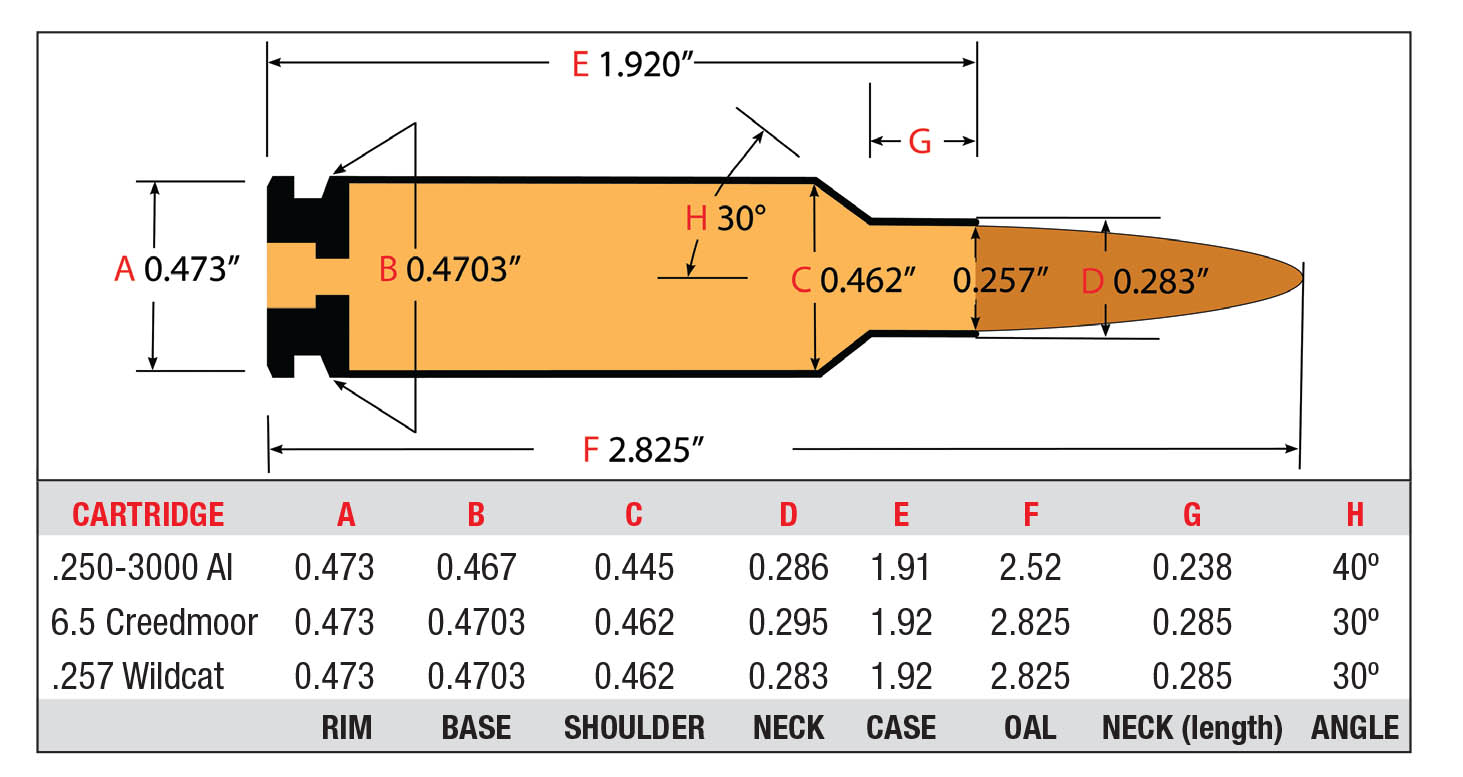
A wildcat cartridge may not need to be justified, but it should have a purpose. Two years ago, I had to spend way too many hours in a pickup truck with Hornady’s Neal Emery on a ride back from a Montana deer hunt. Somewhere between Rapid City and Sioux Falls, during discussions of politics and women, we decided necking the 6.5 Creedmoor to .257 was a great idea. There was purpose and justification.
Now a commercial cartridge, the .257 Roberts was one of the most iconic and useful wildcat hunting cartridges of all time. Though originally designed by Ned Roberts for long-range varmint shooting, the “Bob,” as it’s often called, has morphed into a both-ways cartridge. With bullets ranging from 70 to 120 grains, it’s perfectly suited to varmints and all but dangerous big game – something the 6.5 Creedmoor is not. Though a short-action cartridge, some argue the Roberts needs a long action to take advantage of higher BC bullets while maximizing case capacity. I’ve owned and loaded for more than a half-dozen Bobs. Those that shot fast didn’t shoot well; those that shot well were kind of slow. I just gave up and sold them all.
Of course, there’s the similarly iconic .250 Savage. Handloading can improve on anemic factory load performance, and as accurate as .250-3000 rifles tend to be, they cannot match the Bob ballistically. The .250-3000 Ackley Improved (AI) is a faster and maybe a better option than both, but who has time to fireform cases? If screaming .25s are your elixer of choice – .25s need high velocity to shoot flat, because even the best .25-caliber bullets have deplorable ballistic coefficients (BCs) – the .25-06 Remington and .257 Weatherby Magnum (both former wildcats) are the answer. Both, however, require a long action.
By necking the 6.5 Creedmoor to .257, all the things that are wrong with the Roberts, the Savage and the long .25s are
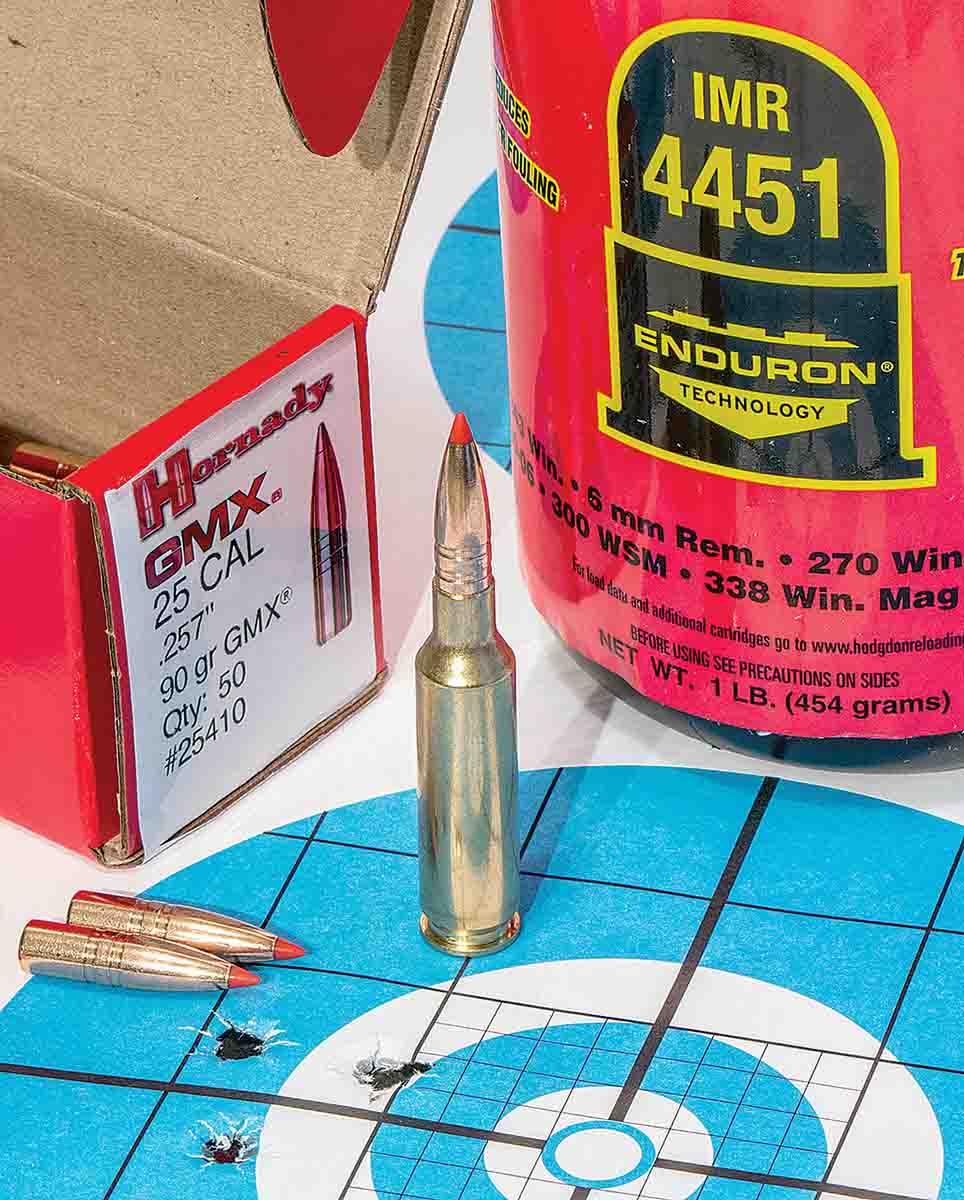
The first step is a chamber reamer. I contacted fellow West Virginian Mike Cyrus, a talented wildcatter; his .500 Cyrus wildcat was featured in the last issue. We discussed reamer design, and Mike called on Dave Manson (www.mansonreamers.com) to help us. Dave’s instructions were simple: do nothing but reduce the neck size from 0.264 to 0.257 inch. Dave did this and wisely applied a 0.225-inch long freebore of only .005 more than bullet diameter, with a 1.5-degree lead. This is the same formula Melvin Forbes at New Ultra Light Arms has been using for more than 30 years to make his rifles shoot so well.
Reloading dies were easy. Since the only dimensional change was neck diameter, standard 6.5 Creedmoor bushing dies were used with a smaller bushing. Hornady supplied the dies but does not offer the correct size bushing. After some calculations, a bushing size that would reduce outside neck diameter to 0.278 inch and the inside to 0.254 inch was settled on. We then did what hillbillies do; we made our own. To make .257 Wildcat brass, simply size new or fired 6.5 Creedmoor brass using a 0.278-inch neck bushing. That’s all, that’s it, you’re done! Redding offers neck bushings in .0010-inch increments from 0.27 to 0.28 inch. (Rumor has it they’ll work in Hornady dies.)
For a barreled action, I started with a new Remington 700 Magpul and installed a Timney two-stage trigger. Then a 24-inch Sendero- profiled barrel was ordered from Montana-based Proof Research (www.proofresearch.com) with a one-in-9-inch twist rate. The carbon fiber Proof barrel was used
to keep weight down, and the twist rate would stabilize all current .257-caliber bullets. With a calculator and lathe, Jerry Dove of Dove Custom Guns (www.dove guns.com) is sort of a metal magician. He installed, chambered and correctly headspaced the Proof barrel.
Since the new cartridge has about 4 percent more case capacity than the .250-3000 AI, maximum loads for that cartridge – tempered by and extrapolated from 6.5 Creedmoor data – seemed like the logical place to start.
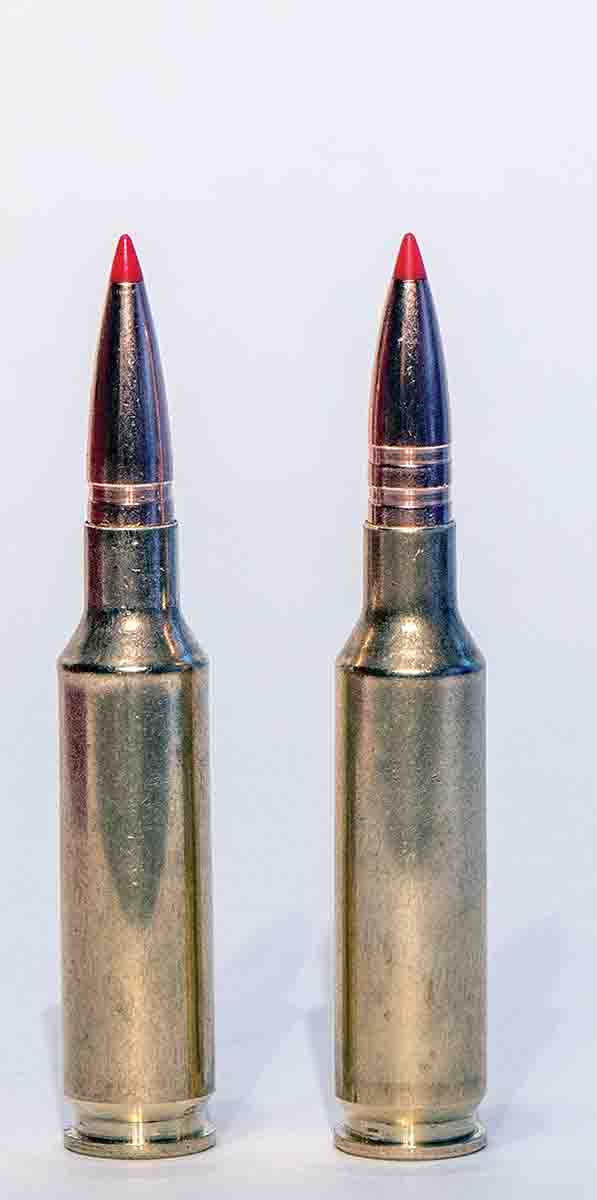
From there I worked down and up in bullet weight with powder charge increases and decreases. I found it easy to approach or achieve .250-3000 AI velocities with no flattened primers or ejector marks, and empties slipped out effortlessly. CFE 223 produced good velocity and reasonably good accuracy, but standard velocity deviations were higher than I liked. IMR Enduron 4166 and 4551 powders filled cases fuller and turned in more consistent velocities; 44.5 grains of IMR-4451 behind a Berger 115-grain VLD Hunting bullet produced the best accuracy and most consistent velocities of any load tested.
Keep in mind, I did not work up loads, I just tried them – all with Remington 91⁄2 primers. It’s still too early to tell what the best powder for this cartridge might be, though I suspect IMR-4451, which is similar in burn rate to IMR-4350, will be close to ideal. I’m also confident that with a bit of load tweaking and a bit more powder experimentation, groups will shrink and velocities will not be far behind actual – not published – factory .25-06 Remington ammunition.
Though technically a .25 Creedmoor, this cartridge is really much easier to make than an improved .250-3000 AI. With no extremely high BC .257-caliber bullets available, the Creedmoor name, and the long distance performance it evokes, doesn’t seem appropriate. After all, like all quarter-bores, this cartridge is really a hunting cartridge. Wanting to highlight that and respect the fellow West Virginians who helped make it possible, I tossed a few names around; .257 Mountaineer and .250 Hillbilly were favorites, but both sounded a bit hokey. So did most other suggestions offered on social media. So it is simply called the “.257 Wildcat” – one of the easiest wildcat cartridges to make and load.
The $1,000 question is whether Hornady will add a .257 to its 6mm and 6.5mm Creedmoor line.
